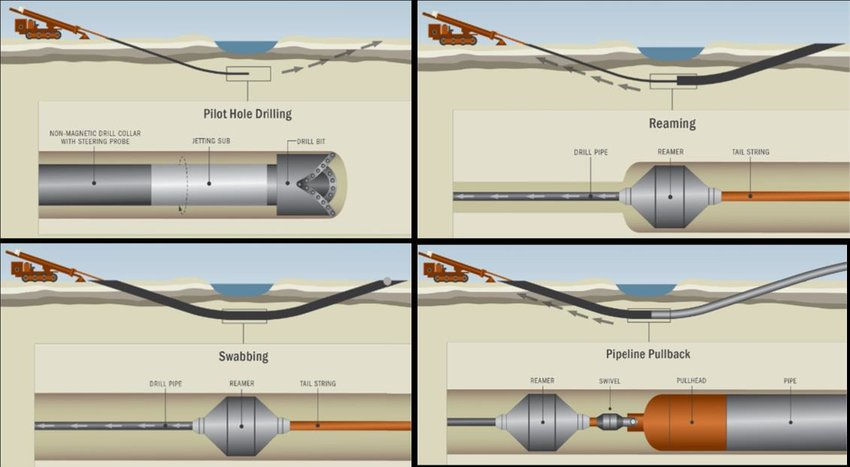What Are the Top Tips for Maintaining Underground Wire Installations?
- Grid Tech
- Feb 14, 2024
- 4 min read
Underground wire installations are a modern marvel, offering a sleek and efficient solution for powering our homes, businesses, and communities. However, once the wires are buried beneath the surface, it's easy to forget about them—until something goes wrong. To ensure the longevity and reliability of your underground wire system, it is essential to implement proper maintenance practices.
Today, here, in this guide, we will explore the top tips for maintaining underground wire installations, helping you safeguard your investment and ensure uninterrupted power delivery for years to come.
Let’s dig into this article to learn more.

Top Tips for Maintaining Underground Wire Installations
Regular Inspections: Regular inspections are crucial for maintaining the integrity of your underground wire installation. By conducting routine checks, you can identify any signs of damage, corrosion, or wear and tear early on, preventing potential issues from escalating. Professional inspections, scheduled at least once a year, provide an opportunity to assess the overall condition of the system and address any emerging concerns promptly, ensuring the long-term reliability of your underground wire installation.
Monitor Moisture Levels: Moisture poses a significant threat to underground wires, accelerating corrosion and deterioration over time. Monitoring moisture levels in the surrounding soil is essential to prevent water buildup, which can compromise the integrity of the wires. Implementing drainage solutions, such as proper grading or installing drainage tiles, helps mitigate moisture infiltration and minimizes the risk of corrosion, ensuring the longevity of your underground wire installation.
Protective Coatings: Properly coating underground wires with corrosion-resistant materials is essential for protecting them from the harsh underground environment. Investing in high-quality protective coatings or wraps adds an extra layer of defense against corrosion, abrasion, and chemical exposure, enhancing the durability and longevity of your underground wire installations. Regularly inspecting and maintaining these coatings ensures continued protection and optimal performance, even in challenging conditions.
Clear Vegetation: Overgrown vegetation near underground wire installations can pose a serious hazard, potentially causing damage or interference with the wires. Regularly trimming back vegetation and establishing clearances around the installation area minimizes the risk of accidental contact or damage, ensuring the safety and reliability of your underground wire system. Additionally, maintaining a clear perimeter facilitates easier access for maintenance and inspection activities, promoting efficient operation and preventing potential hazards.
Proper Grounding: Proper grounding is essential for dissipating excess electrical currents and maintaining the integrity of your underground wire system. Ensuring that grounding rods and connections are in good condition and properly installed minimizes the risk of electrical hazards and equipment damage. Regularly inspecting and testing the grounding system helps identify any issues or deficiencies early on, allowing for timely repairs and ensuring the continued safety and performance of your underground wire installation.
Temperature Monitoring: Extreme temperatures can have a significant impact on the performance and lifespan of underground wires. Installing temperature monitoring systems allows you to track fluctuations and identify potential areas of concern, such as overheating or thermal stress. By monitoring temperature levels in real-time, you can implement appropriate measures to protect the wires from temperature-related damage, ensuring the reliability and longevity of your underground wire installation in varying environmental conditions.
Rodent Control: Rodents pose a serious threat to underground wire installations due to their propensity for chewing through wires, leading to potential damage and disruptions. Implementing effective rodent control measures is essential to safeguard your wires and prevent costly repairs. Utilize strategies such as bait stations or wire mesh barriers to deter pests and create a barrier against intrusion. Regular monitoring and maintenance of these control measures ensure ongoing protection and the uninterrupted operation of your underground wire system.
Emergency Response Plan: Developing a comprehensive emergency response plan is critical for effectively managing underground wire failures or disruptions. Define clear protocols and procedures for responding to emergencies, ensuring that all stakeholders understand their roles and responsibilities. Provide access to emergency contact information and establish communication channels to facilitate swift response and resolution. Regularly review and update the emergency response plan to address evolving threats and ensure readiness to handle any unforeseen circumstances.
Documentation and Record-Keeping: Maintaining detailed documentation of all maintenance activities, inspections, and repairs is essential for effective management of your underground wire installation. Keep accurate records of maintenance schedules, inspection findings, and any corrective actions taken to address issues identified. This documentation serves as a valuable reference for tracking the system's performance over time, identifying trends, and identifying any recurring issues that may require further attention. Regularly review and update documentation to ensure completeness and accuracy.
Stay Updated on Regulations: Staying informed about relevant regulations and guidelines governing underground wire installations is crucial for ensuring compliance and maintaining the safety of your installation. Regularly review and familiarize yourself with local, state, and federal regulations pertaining to underground wire installations, including safety standards and environmental requirements. Ensure that your installation meets or exceeds all regulatory requirements to avoid penalties and potential legal issues. Stay proactive in monitoring regulatory changes and adapting your practices accordingly to maintain compliance and uphold the integrity of your underground wire installation.

The Bottom Line
In conclusion, maintaining underground wire installations requires proactive planning, regular inspections, and adherence to best practices. By following the top tips outlined in this guide, you can safeguard your underground wire system against potential threats and ensure reliable power delivery for years to come. Remember to prioritize safety, stay vigilant, and invest in proper maintenance to protect your investment and preserve the integrity of your underground wire installation.


Comments